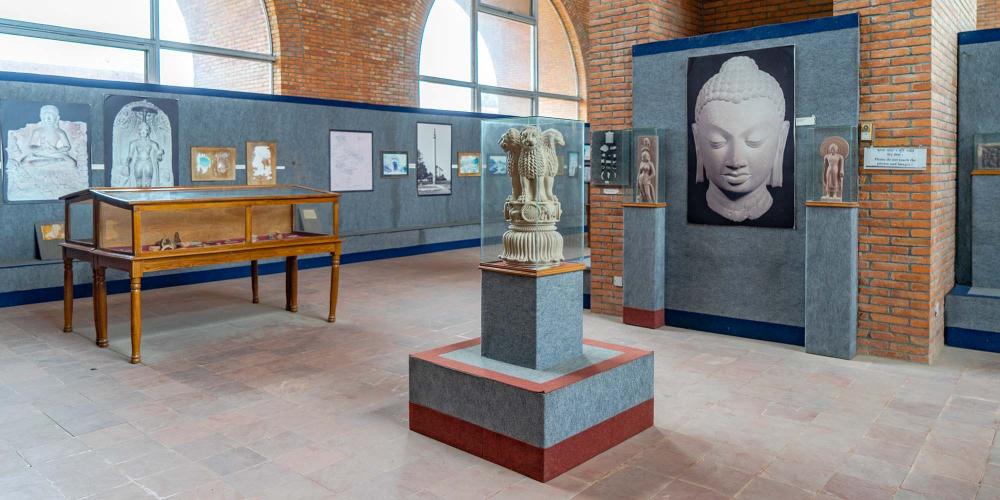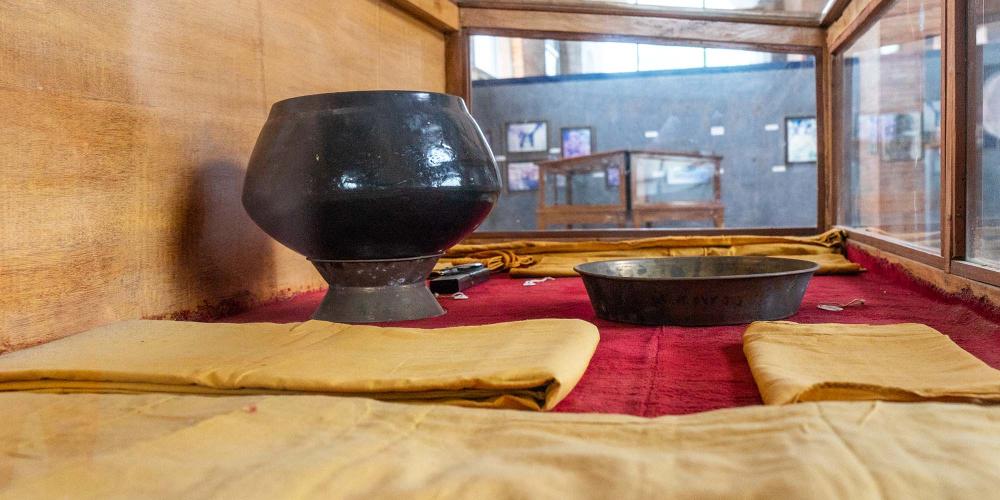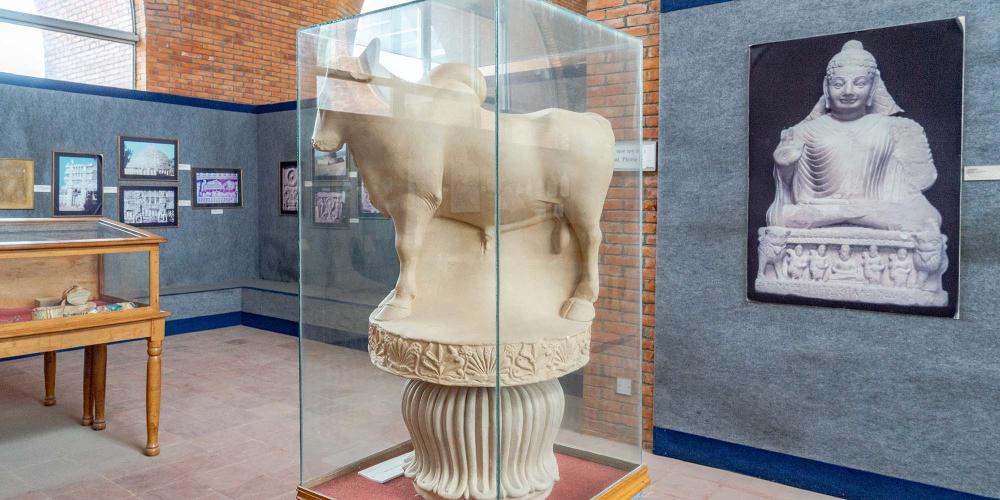Lumbini Museum

In one of the interestingly-shaped buildings that were part of the original 1978 Lumbini Master Plan, you’ll find the Lumbini Museum. The museum is designed to show the significance of the site as the birthplace of Buddha, and offer some examples of the importance of Buddhism more generally.
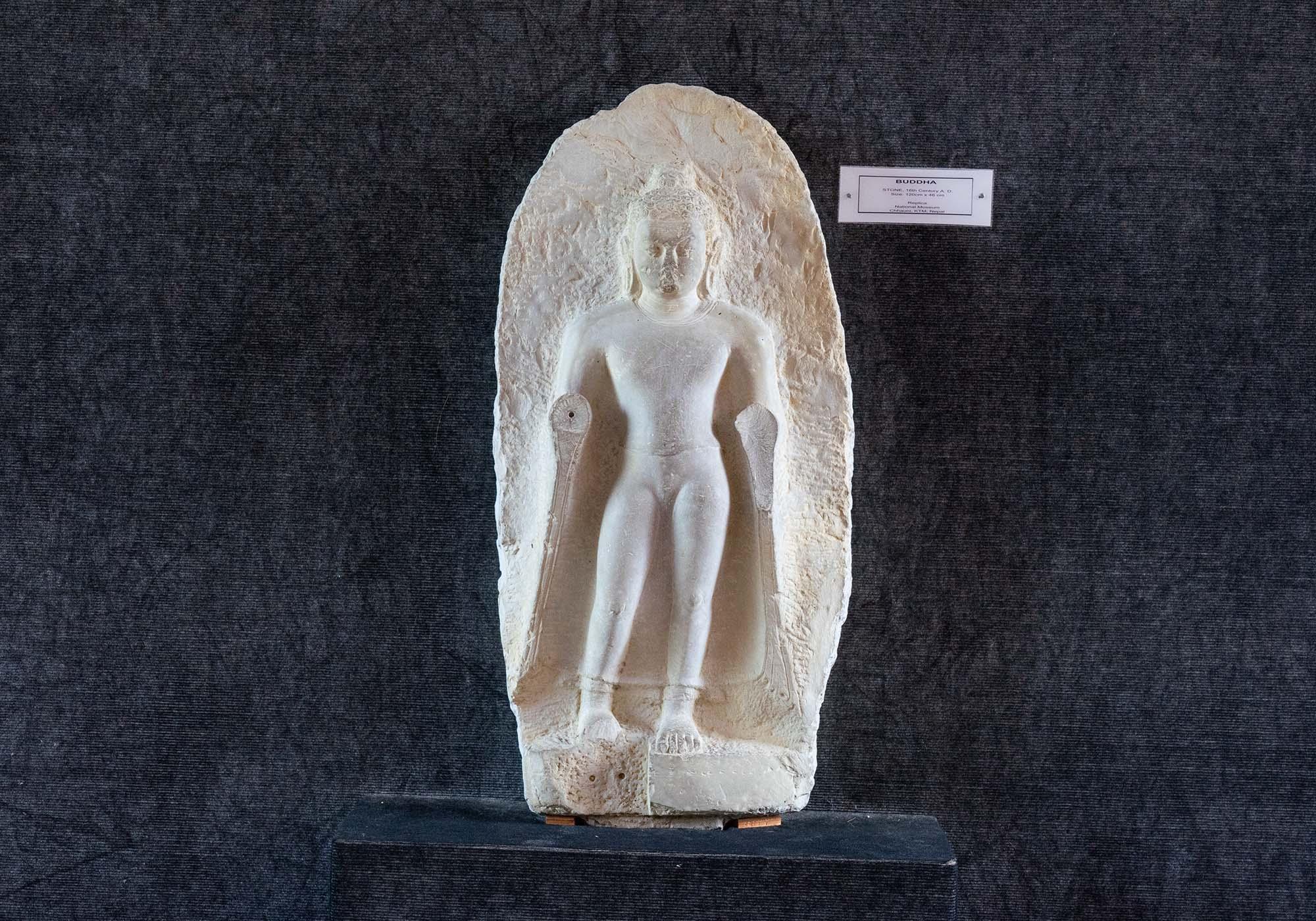
The exhibition is spread over several rooms and inside you’ll find a mixture of artefacts from the Lumbini and photos about its history. There are also statues and other artworks showing important Buddhist iconography.
One section of the museum has examples of traditional dress and ceremonial items that are associated with the history and culture that has emanated from Lumbini.
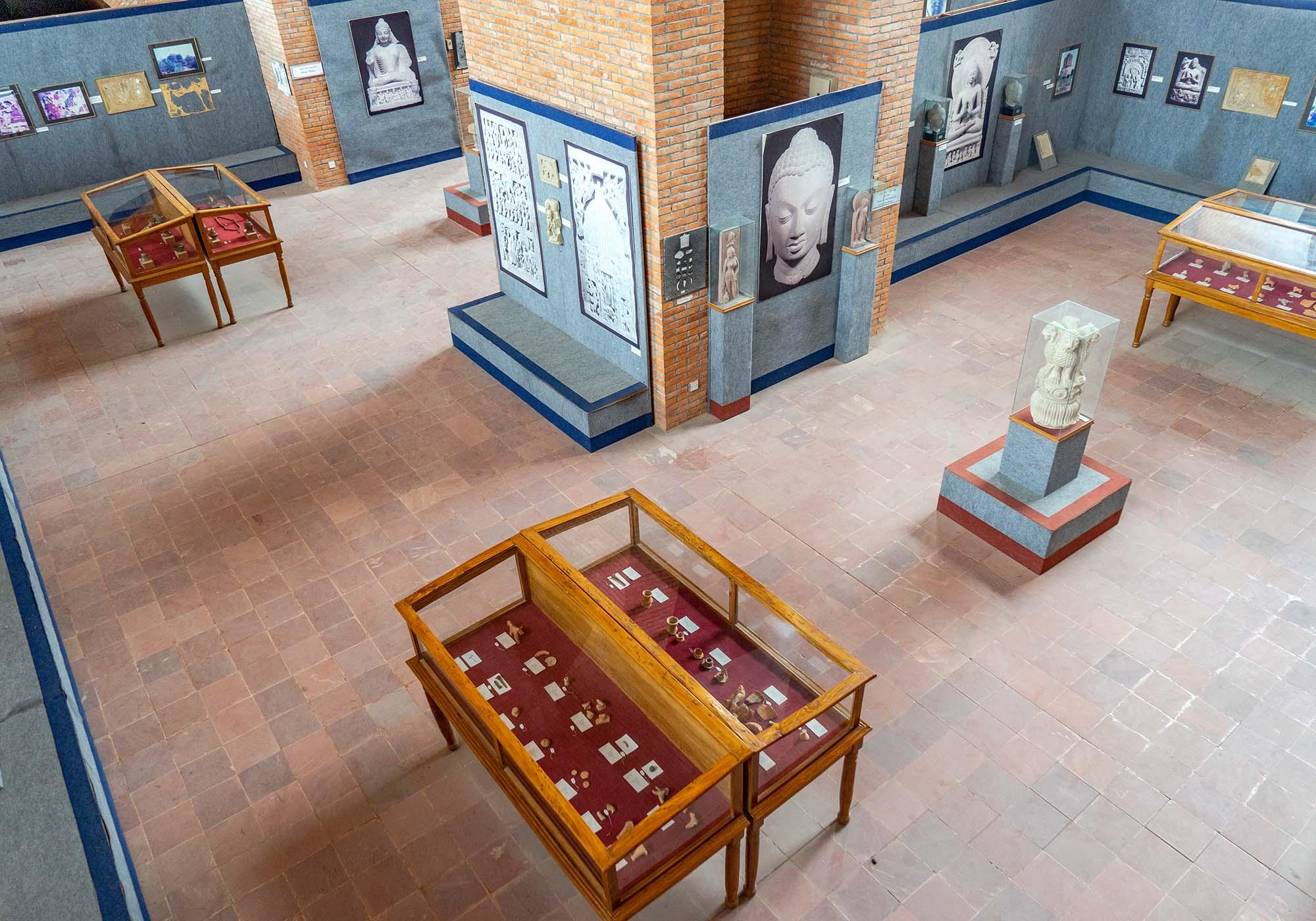
There is limited signage in the museum but it provides a good foundation to appreciate the influences that the site has had around the world, and the archaeological work that is still ongoing at Lumbini to uncover more than 2000 years of history.
Lumbini Museum
Open Wed-Mon 10am-4pm
Foreigner: Rs 50
SAARC resident: Rs 20
